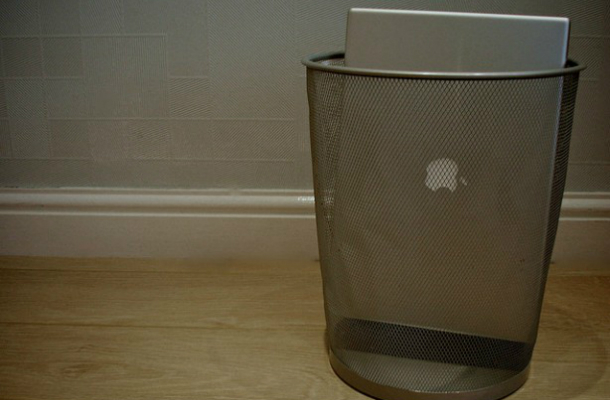I’m a scavenger. My normal reaction to a friend getting a new bit of tech is “What did you do with the old one?” I’m also not above dumpster diving if my eye is caught. In an attempt to use my powers for good, I used to refurbish trashed laptops for a charity. Recently, I was talking to a fellow at the township recycling center about the project when someone put down a laptop, telling me take it. The laptop turned out to be a lovely bit of machinery, not even three years old and without a physical defect. What was wrong with it? The hinge screws needed to be replaced. That was it. In no time at all, I gained access to all of this person’s photos, music, and even her home address thanks to the unsecured documents folder. There wasn’t even a password on the Windows account (which would have taken me a whole 10 minutes to bypass). I had to fight the urge to call the young lady and tell her.
No dog piling on Windows users. A friend sent me a MacBook that he found at a local recycling center and sure enough, all of the user’s files were there. I now know where the owner lives, what he looks like, and (due to a bulging downloads folder) what sort of naughty films he likes.
I understand that not every laptop has an easily removable hard drive or sometimes there’s a problem with the machine that prevents the average user from getting in there, but you need to take more precautions than thinking “no-one will ever touch this.” In both of the previously-mentioned cases, there was enough personal data on the machine for someone to easily steal the identity of the persons in question. Don’t think a password will keep you safe either. That’s easily bypassed by merely externally plugging the drive into a machine.
I’m not saying you need to have a closet full of old hard drives or do as another friend did and take an actual sledgehammer to your computer. The simplest way to delete your data is to make a dummy user account and delete your original one. The majority of your files will then be gone. You can also use the recovery image if that’s an option for you. This is at least an easier task with smartphones and tablets, which have a system reset function (sometimes even built in as a hardware command).
Not matter what, you need to do something. Because as long as your data is on there, it’s out there.


Once upon a time I was sitting in my living room, I scanned for wireless networks, and came upon one completely unsecured. Not only was it unsecured, but the C drive was shared (read and write) at the root directory. Turned out to be a neighbor, I warned her, and she had it fixed.
I remember your telling me that story back when we worked together. Blew my mind.